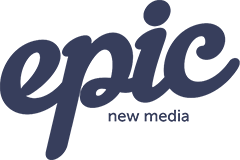What is a lead generation funnel and how can it benefit your business?

In business, particularly online business efforts, one term seems to echo louder than most: lead generation funnel. You’ve probably stumbled upon it in marketing discussions or seen it listed as a crucial strategy in articles (like this one!). But what exactly is this enigmatic funnel, and why does it hold such weight as a business strategy?
Before we unpick the intricacies of lead generation funnels and their benefits, it’s important to realise that this isn’t merely a passing trend. Lead generation funnels are here to stay so let’s see what they’re all about.
What is a lead generation funnel?
In modern marketing, a lead generation funnel is a systematic process that’s designed to attract, engage and convert potential customers (leads) into loyal patrons of your business.
To put it simply, a lead generation funnel is like a road map; it maps out the route from the moment a prospect becomes aware of your brand right until they make a purchase. At first, it’s about casting a wide enough net to draw in individuals who may have an interest in what you offer (your leads). From there, they’re guided down the funnel in a series of stages with each one designed to deepen their connection with your brand and nurture their interest.
From awareness to consideration to conversion, the lead generation funnel is your business’s aide to growth and profitability. And, although there are a series of steps through the funnel, these are part of a transformative strategy that’s intricately planned.
What are the stages of a lead generation funnel?
Going through the lead generation funnel requires being shepherded through distinct stages. At the outset, the top of the funnel, it’s all about attracting attention and capturing interest. The mission is to attract potential leads by offering valuable solutions to their needs or concerns. This may be through blog posts, snippets on social media, captivating videos or targeted ads. The goal remains the same: make them curious and beckon them into the fold.
With awareness established, we move on to engagement. The goal here is to turn their curiosity into genuine interest. Here, you’re providing deeper insights and solutions. White papers, case studies and webinars can show how your offerings can address their specific needs.
As the journey down the funnel progresses, we move on to the stage of ‘consideration.’ Here, your leads become discerning evaluators. They weigh up their options and consider the benefits of what you’re offering. Tailored content including free trials, product demonstrations or consultations can help leads move forward towards making a purchasing decision.
Finally, when leads reach the bottom of the funnel, you help them transition from leads into customers. With clear calls-to-action, optimized landing pages and streamlined checkout processes, you transform your leads into patrons.
How to create a lead generation funnel
Simply knowing the stages of a lead generation funnel isn’t enough. Being successful requires careful planning and a deep understanding of your target audience’s needs and preferences. Here are the steps to creating a lead generation funnel that attracts, nurtures and converts:
1. Identify Your Target Audience:
Before creating your lead generation funnel, you need to identify your target audience. This means understanding their needs, pain points and the current stage of their buying journey. For this, you’ll need to look at demographic data, psychographic insights and behavioural patterns. Ultimately, you want to know:
- Who are they?
- What challenges do they face?
- What solutions are they seeking?
When you know the answers to these questions, you can align your offerings precisely. It’s not about casting the biggest net—it’s about casting the right net.
2. Create Compelling Content:
Content is the absolute lifeblood of your lead generation funnel. For your audience to go through the funnel, they need to see content that resonates and adds value at every stage.
Your content delivery begins with understanding your target audience (see point 1). With this knowledge, you can then create content to specifically match their needs and interests.
At the top of the funnel—the awareness stage—things like informative blog posts, videos and engaging snippets on social media can draw in leads and spark intrigue. When these leads progress to the consideration stage, the content should take on a more educational tone. Things like eBooks, webinars or case studies are useful resources here.
Finally, when the leads reach the end of the funnel, your content needs to become persuasive. You might include product demonstrations, persuasive testimonials or enticing offers to guide them towards the action you desire.
3. Drive Traffic to Your Content:
With your tailored and compelling content sorted, you need to make sure it reaches your target audience. This is when you need to work on driving traffic to it. This requires a multifaceted approach using a range of marketing channels. Examples include:
- Search engine optimisation (SEO): Optimise both on-page and off-page aspects of your website so that it ranks highly in search engine results pages (SERPs).
- Social media: Showcase your content and create engagement and meaningful interactions with it.
- Email marketing: This allows you to personalise messages to inboxes to promote your content and nurture leads. You could use newsletters, drip campaigns or even personalised outreach.
- Paid advertising: This is a shortcut to being visible. You can use this to reach potential leads accurately. Whether you go for display ads, sponsored content or pay-per-click (PPC) ads, it can be a cost-effective way to drive traffic.
- Influencer partnerships: This can amplify your reach and lend credibility to your content.
4. Capture Leads:
The next step is to capture leads—you need to transform that fleeting interest into a connection. For this, you need to implement lead capture mechanisms on your website and landing ages. Lead capture forms allow you to collect contact information from people who express an interest. To get them to hand over this information, you can use incentives like exclusive content, insider insights or discounts. This isn’t just a name-collecting exercise, though, it’s about creating genuine connections and relationships.
5. Nurture Leads:
After capturing leads, you need to nurture them and guide them towards action. This might be through personalised content, automated workflows or targeted email campaigns. With thoughtful and value-driven tailored messages, you can guide them through the funnel and build their trust. Personalisation here is important: whether this is addressing them by name, referencing their past interactions or making them a personal recommendation. It’s important not to think of this as simply pushing them towards conversion. Rather, create a meaningful relationship for mutual benefit.
6. Convert Leads into Customers:
This is your end goal and what the whole lead generation funnel is about. This requires clear pathways and compelling calls-to-action (CTAs). They need to inspire action in the lead. It might be an offer of a free trial, to schedule a consultation or to make a purchase. The key here is to write CTAs that resonate with their needs. At this stage, it is also important to communicate clearly to instil confidence in leads and build trust.
Finally, converting leads into customers is not just about closing a sale. When you lead them down the funnel, you’re creating a lasting relationship. This means leads become loyal customers who can also be a part of your brand marketing through their recommendations.
